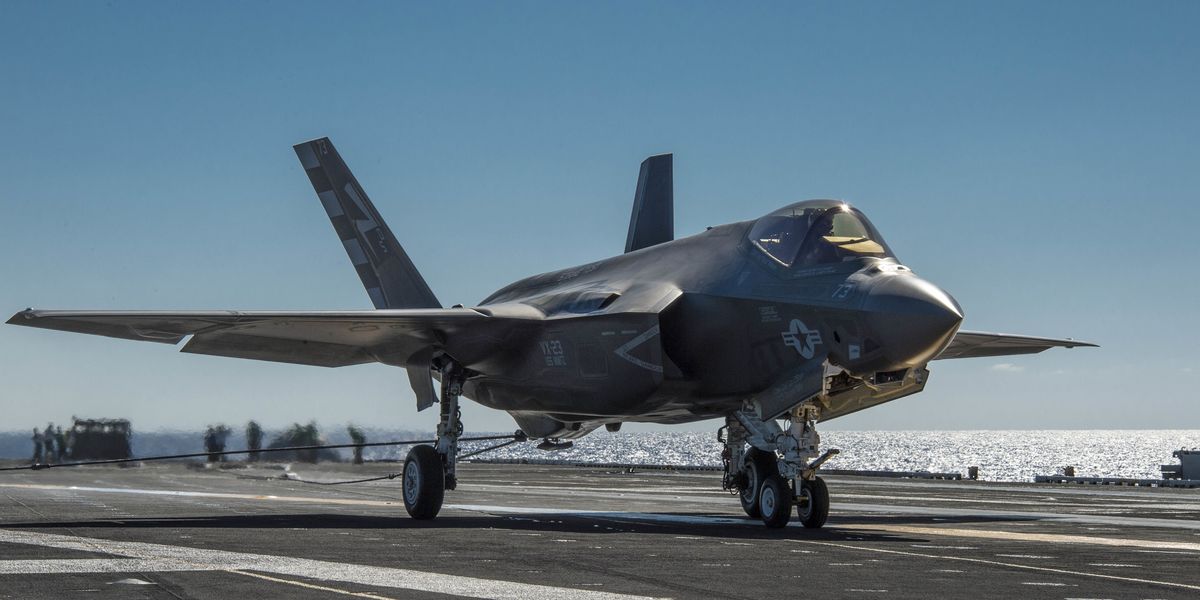New US Air Force study asks: What’s the right number of F-35s?
By
Valerie Insinna
A new tactical aircraft study underway could make certain what has until now been a suspicion: The U.S. Air Force is unlikely to purchase all of the 1,763 F-35A jets in its program of record.
The service is undertaking the study as it readies its fiscal 2023 budget and grapples with reducing the types of fighters it flies
from seven to four main platforms by 2030, as prescribed by the service’s chief of staff.
The four platforms could include:
- The sixth-generation Next Generation Air Dominance system, or NGAD, which will supersede the F-22.
- The F-35A Joint Strike Fighter, which will make up the preponderance of the fleet.
- The F-15EX, which will replace much of the existing F-15 inventory.
- And either the F-16 or its replacement.
That
last decision is the most significant for the F-35 program. The Air Force’s original plan was to purchase enough F-35s to supersede all of its F-16s. So if the Air Force keeps the F-16 — or develops a separate low-cost replacement for part of the F-16 fleet — does it need to buy as many F-35s [emphasis added]?
“That’s the big question,” said Todd Harrison, an aerospace and defense budget expert with the Center for Strategic and International Studies. “Quite honestly, I don’t think there is any good news that will come out for the F-35 program for this. It’s only potential downsides. That’s real risk to the program.”
The Air Force has maintained that the F-35 program of record remains unchanged, but the ongoing tactical aircraft study is set to provide alternative models of what its fighter inventory could look like, potentially including proposals with fewer F-35s...
How low can it go?
Reports vary on how low the F-35 program of record could fall.
Internal documents by the Air Force’s future war-fighting cell indicated a plan to curb orders at 1,050 jets, Aviation Week reported in December. Will Roper, the Air Force’s acquisition executive during the Trump administration, called for F-35 purchases to be capped at about 800 units,
CNN reported in May.
Any attempt to cut the program of record will face a difficult fight in Congress — particularly from lawmakers whose districts economically benefit from the jet’s production and who have successfully increased F-35 procurement beyond the Defense Department’s budget request since 2015.
That
tradition may be in jeopardy as powerful lawmakers like House Armed Services Committee Chairman Adam Smith, D-Wash., criticize the cost of operating, sustaining and upgrading the jet. But it remains to be seen whether Congress would be amenable to a cut to the overall buy [emphasis added], Harrison said.
...the Air Force has kept most information about NGAD under wraps, including what technologies will make up the family of systems, how much it will cost, how many will be purchased and when it will be fielded.
Meanwhile, [Air Force Chief of Staff
Gen. CQ]
Brown said new design and manufacturing techniques, such as digital engineering, could allow the service to develop a “four-and-a-half-[generation] or fifth-gen-minus” fighter to replace early block F-16s at a lower cost than the F-35 [emphasis added].
However, Harrison is skeptical such an aircraft could be built at a cheaper price tag than the advanced F-16s rolling off Lockheed Martin’s production line in Greenville, South Carolina...
A new tactical aircraft study underway could make certain what has until now been a suspicion: The U.S. Air Force is unlikely to purchase all of the 1,763 F-35A jets in its program of record.

www.defensenews.com
Mark
Ottawa







